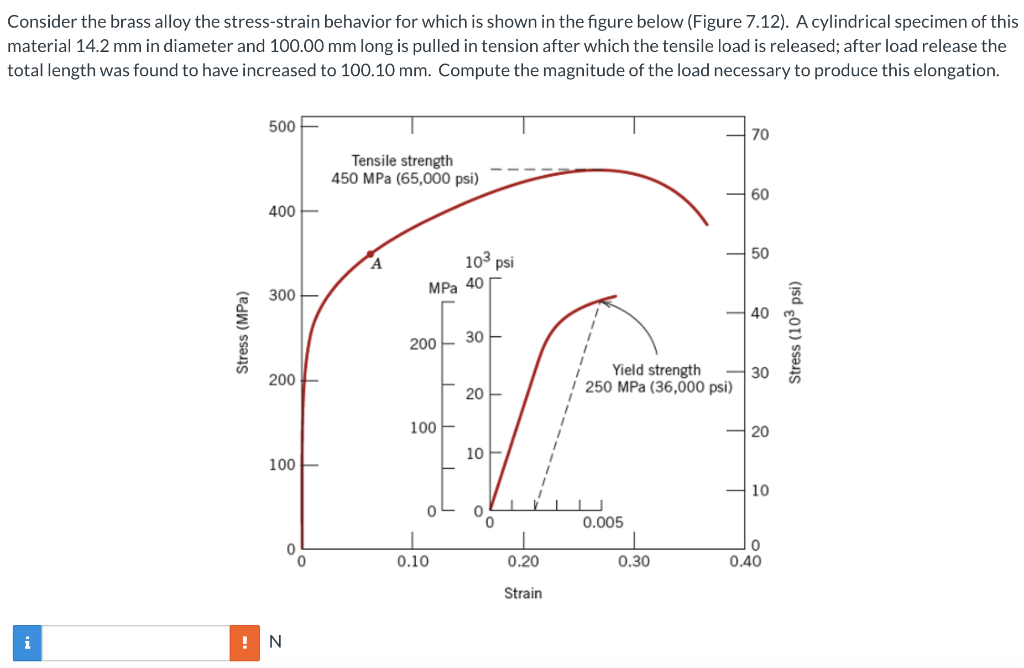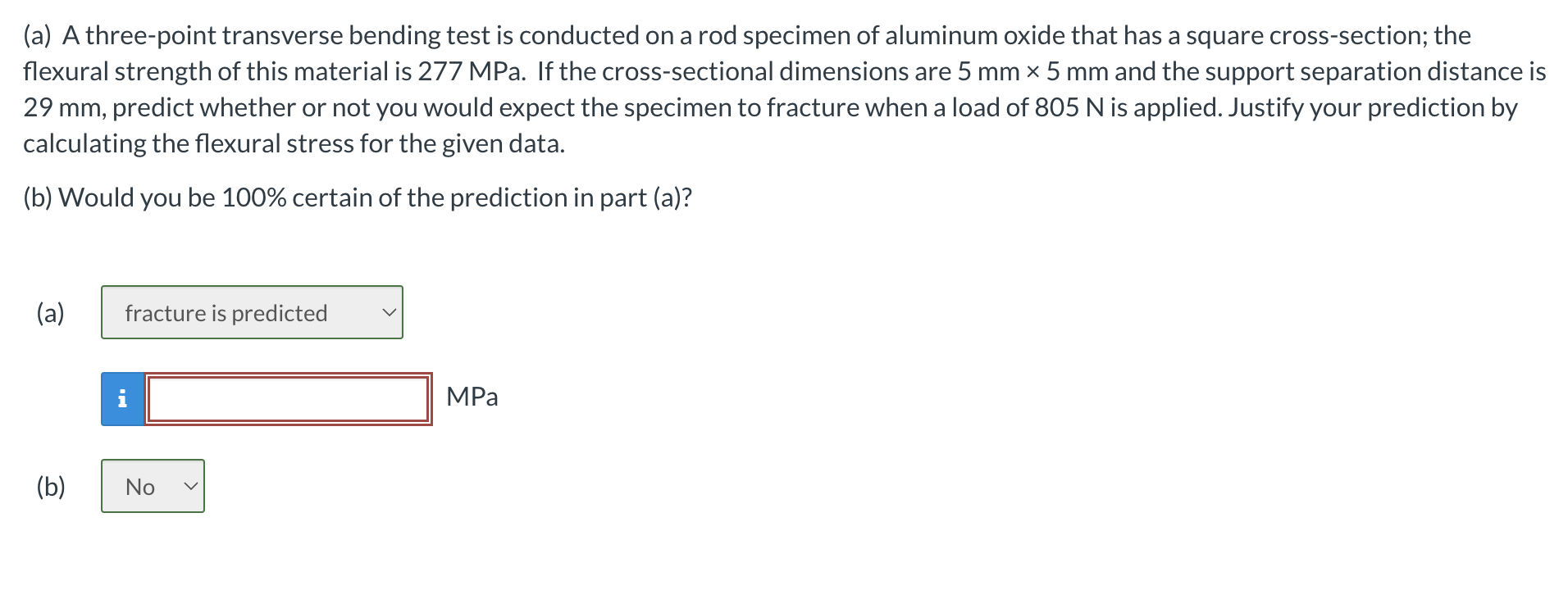Home /
Expert Answers /
Mechanical Engineering /
consider-the-brass-alloy-the-stress-strain-behavior-for-which-is-shown-in-the-figure-below-figure-pa966
(Solved): Consider the brass alloy the stress-strain behavior for which is shown in the figure below (Figure ...
Consider the brass alloy the stress-strain behavior for which is shown in the figure below (Figure 7.12). A cylindrical specimen of this material \( 14.2 \mathrm{~mm} \) in diameter and \( 100.00 \mathrm{~mm} \) long is pulled in tension after which the tensile load is released; after load release the total length was found to have increased to \( 100.10 \mathrm{~mm} \). Compute the magnitude of the load necessary to produce this elongation.
(a) A three-point transverse bending test is conducted on a rod specimen of aluminum oxide that has a square cross-section; the flexural strength of this material is \( 277 \mathrm{MPa} \). If the cross-sectional dimensions are \( 5 \mathrm{~mm} \times 5 \mathrm{~mm} \) and the support separation distance is \( 29 \mathrm{~mm} \), predict whether or not you would expect the specimen to fracture when a load of \( 805 \mathrm{~N} \) is applied. Justify your prediction by calculating the flexural stress for the given data. (b) Would you be \( 100 \% \) certain of the prediction in part \( (\mathrm{a}) \) ? (a) MPa (b)
Expert Answer
The permanent strain in the cylinder is

